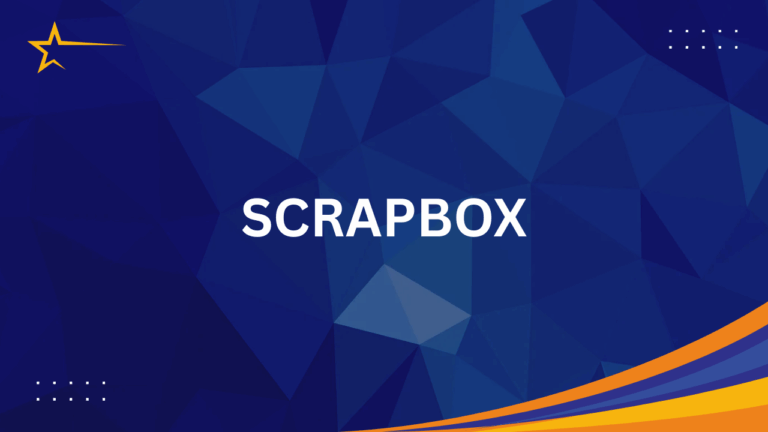Scrapbox: A New Way to Think, Write and Collaborate
Introduction: What Is Scrapbox?
In the last few years, a wave of note-taking and knowledge-management tools has reshaped how we capture ideas. Among these, Scrapbox stands out. Developed by a small Japanese team at Nota Inc., is more than a note app. It’s a shared canvas for linked notes, diagrams, and conversations. Unlike traditional software that separates documents into folders and rigid hierarchies, Scrapbox treats your notes as part of one big, living network. This human-centered design has earned it a cult following among designers, engineers, writers, and teams who want to think together.
The Philosophy Behind Scrapbox
Most software starts by asking users to create categories or file structures. That can be comforting at first but it also forces premature decisions about where ideas “belong.” Scrapbox takes the opposite approach. Every new note simply lives in your project; there’s no need to choose a location. If you want to Scrapbox connect notes, you just type a word or phrase inside square brackets and it becomes a link. Over time, your project grows into an interlinked web of concepts. This philosophy echoes how our brains actually work—associating ideas dynamically rather than filing them away.
Also read Zerohedge
How Scrapbox Differs From Conventional Note Apps
Traditional apps such as Evernote or OneNote mimic paper notebooks and folders. They’re great for storage but less ideal for emergent thinking. Scrapbox is built for discovery and collaboration. Key differences include:
- Linking by Typing: Adding [square brackets] instantly turns text into a page link. No complex syntax or plugins.
- Automatic Backlinks: When you link to a page, Scrapbox automatically shows where else it’s referenced, revealing connections you might not have noticed.
- Shared Editing: Multiple people can work on the same project at once, like Google Docs but with networked notes.
- Flexible Formatting: Bullets, code blocks, images, even rough sketches can live side by side.
These features make Scrapbox feel more like a brainstorming room than a filing cabinet.
Building a Personal Knowledge Base
For individuals, Scrapbox acts as a second brain. Writers use it to collect research and plot storylines. Developers log snippets, bugs, and project decisions. Students record lecture notes and link concepts across courses. Because every page can be connected to any other, you don’t lose ideas in forgotten folders. Searching later is faster because you can recall a concept from multiple angles. Many users say the simple act of linking notes in Scrapbox sparks new insights they wouldn’t have had in a linear notebook.
Collaboration That Feels Natural
Where Scrapbox really shines is team collaboration. Everyone on a project shares the same pool of linked notes. When one person creates a page or adds a link, the context becomes visible to everyone else instantly. This reduces duplication and email clutter. Instead of endless chat threads, discussions can happen right inside the relevant note. Because pages are plain text with lightweight Scrapbox formatting, even non-technical teammates can jump in without training. Teams often describe the experience as “whiteboarding with memory”—a living document that never gets out of date.
The Visual Layer
Unlike most text-heavy apps, Scrapbox encourages light sketching and diagramming. You can drop in images, paste screenshots, or draw rough shapes to illustrate an idea. These visuals stay alongside your text rather than in separate files. Over time, a Scrapbox project starts to look like a map of your thinking process. That makes onboarding new teammates or revisiting old projects far easier than reading static documentation.
Use Cases Across Fields
Because of its flexibility, Scrapbox has been adopted in many different contexts:
- Software Development: Teams track features, bugs, and design discussions in one place, replacing a mix of wikis and issue trackers.
- Design Studios: Creative teams collect mood boards, client feedback, and sketches while keeping them linked to specs.
- Education: Teachers build interactive syllabi and students create cross-linked study guides.
- Personal Projects: Bloggers, podcasters, and freelancers use as an idea incubator.
Each community molds the tool to its own workflow, which is possible because Scrapbox imposes so few constraints.
The Human Side of Scrapbox
One reason Scrapbox feels “humanised” is its gentle learning curve. There’s no jargon or complex markup language. You can start typing right away and discover features organically. The interface emphasizes plain text, whitespace, and simple icons rather than flashy widgets. This minimalist aesthetic Scrapbox lowers barriers to entry, especially for people who aren’t power users. Even the way links are created—by bracketing normal words—feels natural. How Scrapbox Encourages Emergent Structure
Many users talk about “emergent structure” in Scrapbox. Because you’re not forced to decide on Scrapbox categories in advance, patterns arise naturally as you link pages. Later, you can create index pages or “hub” pages that summarize a topic and link out to related pages. This is similar to how a Wikipedia article connects to other entries but on a personal or team scale. Over months, your Scrapbox can evolve from a loose set of notes into a powerful knowledge graph.
Integrations and Export Options
Scrapbox also plays nicely with other tools. You can paste URLs, embed code snippets, or link to external files. Some developers use APIs to pull data in or push it out. And because it stores Scrapbox content in plain text, exporting your work is straightforward. This openness helps users feel confident their ideas aren’t locked into a proprietary silo—a crucial factor for long-term knowledge bases.
Strengths and Limitations
No tool is perfect, and Scrapbox is no exception. Its biggest strength—free-form linking—can also create clutter if a team doesn’t agree on naming conventions. Large projects may need occasional cleanup to merge duplicate pages. And while the interface Scrapbox is simple, it’s web-based; heavy offline users may prefer a desktop client. Still, for most teams the benefits outweigh these drawbacks. The ability to think, write, and collaborate without rigid structure is liberating.


